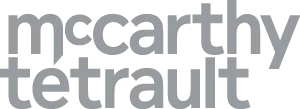In December 2020, the Ontario Securities Commission (OSC) published OSC Staff Notice 45-717 Ontario's Exempt Market, a report on capital raising activity by corporate (non-investment fund) issuer's in Ontario's exempt market between 2017 and 2019 (the Exempt Market Report).
What is the Exempt Market?
Generally, securities offered to the public in Ontario must be offered under a "prospectus", which provides details of the issuer and securities being offered and is filed with the relevant securities commissions. However, there are some exceptions to this rule that allow securities to be offered without a prospectus, called "prospectus exemptions". These prospectus exemptions can help an issuer raise money from investors without the time and expense of preparing and filing a prospectus.
The "exempt market" refers to the segment of Canada's capital markets where securities can be sold without a prospectus (private placements). One of the most commonly relied upon exemptions for private placements is the "accreditor investor" exemption1, which allows issuers to distribute securities to individuals and organizations that meet certain asset or income thresholds or other prescribed characteristics. Investors who buy securities in the exempt market are then limited in their ability to resell the securities.
Each province and territory in Canada has its own securities laws and securities regulator, although the laws are largely harmonized. The Exempt Market Report focuses primarily on private placement activity in Ontario.
More information on Ontario's exempt market can be found here: https://www.osc.gov.on.ca/en/exempt-market.htm.
Highlights of the Exempt Market Report
The Exempt Market Report provides a snapshot of key trends in Ontario's exempt market between 2017 and 2019 in each of the following areas: Market Composition and Annual Trends, Investor Trends and Issuer Trends2. Highlights from the Exempt Market Report in each of these areas are below:
Market Composition and Annual Trends
- 2019:
- approximately 3,200 issuers reported $88.6 billion in capital raised from approximately 35,200 Ontario investors through prospectus exempt distributions
- institutional investors accounted for 96.3% of total capital raised, while 3.7% was raised through individual investors3
- 56% of gross proceeds raised from institutional investors was raised from the issuance of debt securities, while 70% of gross proceeds raised from individual investors was raised from the issuance of non-debt securities4
- 62% of capital raised was by issuers with head offices located outside of Canada, while 38% of capital raised was by issuers with head offices located in Canada
- 95% of gross proceeds were raised using the "accredited investor" exemption and 90% of issuers relied on the "accredited investor" exemption
- 2017 to 2019:
- while annual gross proceeds raised from Ontario investors declined slightly from 2017 levels, investor participation, primarily by individual investors, has increased over the last two years (from approximately 28,000 in 2017, to over 35,000 in each of 2018 and 2019)
- investments by individual investors in all financial issuers5 continues to grow (from approximately $1.2 billion in 2017, to over $2.4 billion in 2019)
- Ontario investors (mostly institutional) continue to allocate a large amount of capital to foreign, especially U.S. based, issuers ($54 billion in 2017, $51 billion in 2018, and $55 billion in 2019)
- the offering memorandum, family, friends and business associates exemption and existing securities holder exemptions were used by over 1,300 issuers to raise just over $1 billion in aggregate
- there has been no reported use of the crowdfunding exemption to raise capital from Ontario investors since it came into effect
Investor Trends
- Key Sectors: Individual investors allocated a larger portion of their capital (37%) to mortgage and real estate sectors than institutional investors (15%), institutional investors allocated 55% of their capital to issuers in the finance sector
- Reporting Issuers: Reporting issuers received 22% of the total invested in the exempt market by individual investors ($0.7 billion) and 17% of the total invested by institutional investors ($14.3 billion). For individual investors, investments in reporting issuers were concentrated in the mining (37%) and finance (30%) sectors
- Mortgage and Real Estate Investments: Since 2017, there has been a consistent increase in mortgage and real estate investments by individual investors (from approximately 8,800 individual investors in 2017, to approximately 10,600 individual investors in 2018, to approximately 12,900 individual investors in 2019). Similar to past years, in 2019, individuals made investments in these issuers predominantly through non-debt/equity securities (97% of $1.2 billion in total investments), while over half of institutional investments in these issuers were through debt securities (52% of $13.3 billion in total investments)
Issuer Trends
- Issuer HQ: In 2019, of $88.6 billion in capital raised, $34.1 billion was raised from issuers with head offices in Canada ($22.3 billion from issuers with head offices in Ontario), $36.9 billion was raised from issuers with head offices in the U.S., and $17.7 billion was raised from issuers with head offices in other foreign jurisdictions
- Ontario Issuer Sectors: In 2019, of $22.3 billion in capital raised from issuers with head offices in Ontario, $10.3 billion was raised from issuers in the finance sector (20% of such issuers being reporting issuers), $5.4 billion was raised from issuers in the real estate sector (11% of such issuers being reporting issuers), and $1.9 billion was raised from issuers in the mortgage sector (7% of such issuers being reporting issuers)
- Ontario Financial Issuers:
- Ontario Finance Sector: In 2019, of $10.3 billion raised in Ontario from issuers in the finance sector, $5.7 billion was raised by financing vehicles, funds and issuers involved in investment activities, and $4.4 billion was raised by issuers involved in non-depository credit intermediation (including over 90% raised by captive finance firms of global automakers)
- Ontario Mortgage and Real Estate Sectors: In 2019, of $1.9 billion raised from Ontario issuers in the mortgage sector, 65% of gross proceeds were raised by issuers that are mortgage investment entities (which mortgage investment entities made up 90% of Ontario issuers in the mortgage sector raising funds in the exempt market), and of $5.4 billion raised from Ontario issuers in the real estate sector, 92% of gross proceeds were raised from institutional investors
- Ontario Non-Financial Issuers: In 2019, over half of all mining (58%) and other non-financial issuers (52%) in Ontario raising money in the exempt market reported less than $5 million in total assets. Approximately 64% of mining issuers and 40% of other non-financial issuers in Ontario raising money in the exempt market raised $1 million or less in 2019
Upcoming Exempt Market Developments
In December 2020, the OSC confirmed amendments to Ontario's prospectus and registration exemptions regarding non-qualified syndicated mortgage investments (NQSMI). These amendments, together with the amendments of the Canadian Securities Administrators (CSA), will drive more activity to exempt market dealers and result in the transfer of primary regulatory oversight of NQSMI activity from the Financial Services Regulatory Authority of Ontario (FSRA) to the OSC, except for syndicated mortgages distributed to "permitted clients" as defined in National Instrument 31-103 Registration Requirements, Exemptions and Ongoing Registrant Obligations. The transfer of regulatory oversight from FSRA to the OSC was expected to take place on March 1, 2021 but is now expected to take place on July 1, 2021.
The OSC has reminded businesses involved in the sale of NQSMI to non-permitted clients to seek exempt market dealer registration as soon as possible which registration applications typically take at least 90 working days to process.
If you have any questions regarding the Canadian exempt market or the Exempt Market Report, we invite you to contact either of the authors or any other member of our Capital Markets team.
Footnotes
1 See definition of "accredited investor" in Part 1: Definitions and Interpretation of National Instrument 45-106 Prospectus Exemptions.
2 The Exempt Market Report is based on data obtained from the Form 45-106F1 Report of Exempt Distribution (F1 Report) filed with the OSC by corporate issuers that raised capital from Ontario investors under reportable prospectus exemptions. Only certain prospectus exemptions trigger a requirement to file an F1 Report and so the information gathered from the filings does not represent all exempt market activity. For more information on which exemptions require the filing of an F1 Report in Ontario, see Part 6: Reporting Requirements of National Instrument 45-106 Prospectus Exemptions. The data in the Exempt Market Report was collected at a point in time and may not incorporate the latest filer amendments or late filings. In addition, "data cleaning" methods were applied to exclude erroneous or identifiable duplicate records that were filed.
3 For the purpose of the Exempt Market Report, "individual investor" (or "individuals") refers to investors that were identified by their full legal name and not a corporation name or legal entity name. In some cases, individual investors may also include named individuals that were purchasing on behalf of a beneficial owner. "Institutional" refers to institutional investors and other non-individuals such as companies, trusts or managed accounts purchasing on behalf of a beneficiary or group of beneficiaries.
4 Non-debt securities includes all classes of shares, preferred shares, flow-through shares, partnership units, depository receipts, subscription receipts and other securities that are not convertibles, rights, bundled units or debt related securities.
5 For the purpose of the Exempt Market Report, "financial issuers" include issuers identified in the finance, real estate and mortgage sectors. Issuer sector categories were based on their reported NAICS (North American Industry Classification System) code with the exception of mortgage issuers, which were identified based on additional OSC staff research.
To view the original article click here
The content of this article is intended to provide a general guide to the subject matter. Specialist advice should be sought about your specific circumstances.




